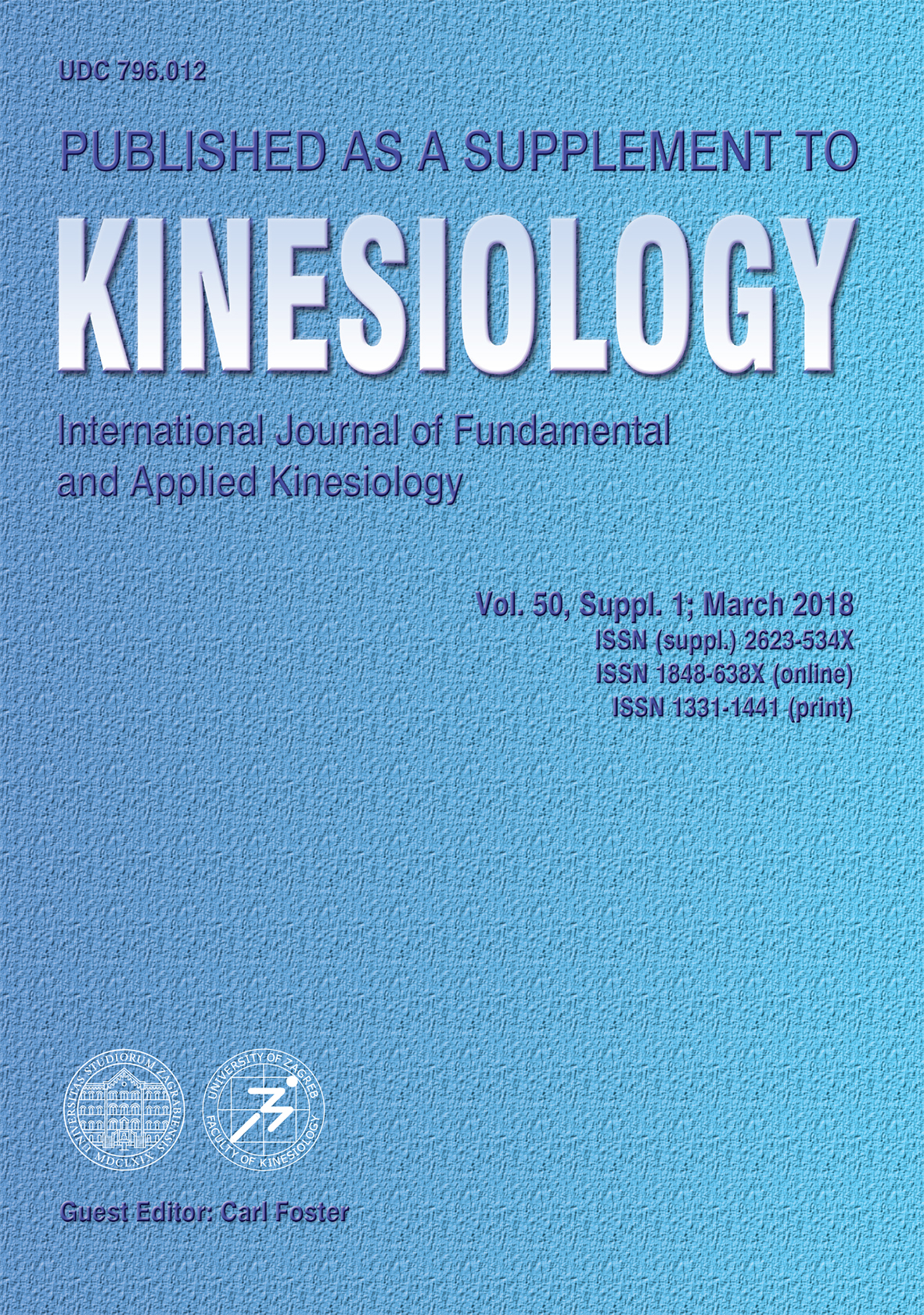ACTIVE MUSCLE MASS AFFECTS ENDURANCE PHYSIOLOGY: A REVIEW ON SINGLE VERSUS DOUBLE-LEG CYCLING
Abstract
This review gives an overview of methods and outcomes of studies that compared circulatory, ventilatory, energetic or hormonal responses evoked by single-leg cycling and double-leg cycling at sub-maximal and maximal intensities. Through a systematic search, 18 studies were identified in the databases PubMed, Embase and Web of Science. Additionally, one study was added after a check of references. Critical analysis of each study showed that their quality was low to moderate. Between studies, widely divergent study procedures were present, such as different intensities, incremental or constant workloads, and different cycling frequencies. Moreover, a large variety of outcome variables was found and thereby comparison was hard. Nevertheless, results showed a tendency to higher hormonal levels of catecholamines as well as circulatory and ventilatory responses during double-leg cycling compared to one-leg cycling. Additionally, at similar normalized submaximal workloads, blood lactate levels tended to be lower during double-leg cycling, suggesting that more type II muscle fibers were recruited. From the reviewed studies the tentative conclusion is that active muscle mass seems a crucial factor in the regulation of endurance performance. Consequently, exercise regimens that recruit a larger active muscle mass, for example combined arm and leg exercise, would optimally stress the release of biochemicals and hence the modulation of central training adaptations, which may positively affect physical capacity in, for example, persons that have diminished leg muscle mass available. However, it also became clear that more information is needed to further understand the contributions of active muscle mass. The experimental possibilities of comparing one-legged and two-legged cycling is promising, but future studies should aim to provide complete quantitative data on the muscle mass recruited, as well as on the specific contribution of anaerobic/aerobic metabolism. They should also aim to include blood parameters such as PCO2, pH, myokines and physiological responses such as heart rate and ventilation.
Key words: exercise test, physical exertion, skeletal muscle, muscle fatigue, review of literature
Downloads
How to Cite
Issue
Section
License
Copyright (c) 2018 Kinesiology

This work is licensed under a Creative Commons Attribution-NonCommercial 4.0 International License.
At Faculty of Kinesiology we recognize that access to quality research is vital to the scientific community and beyond. Kinesiology is non-profit journal and all costs of publishing and peer review process are covered by the publisher itself or other funding sources like Ministry of Science and Education of the Republic of Croatia. Full text papers are also available free of charge at http://hrcak.srce.hr/kineziologija. There are no restrictions on self archiving of any form of paper (preprint, postprint and publisher's version).
Articles are distributed under the terms of the CC BY - NC 4.0
Kinesiology does not charge any fees to authors to submit or publish articles in our journal.


